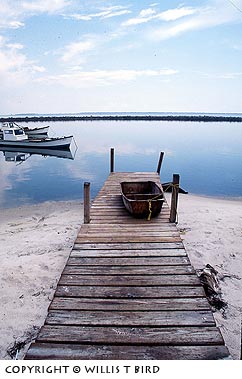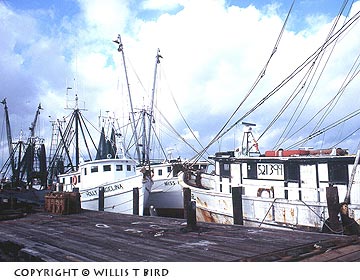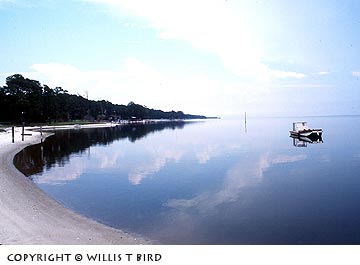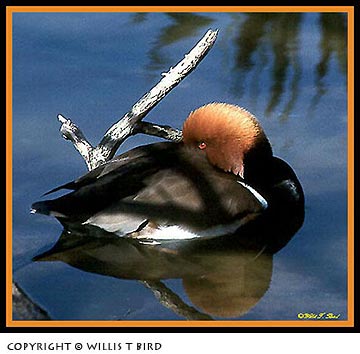 One of the first questions upcoming photographers ask is, “What kind of lenses should I get?” The answer depends on the type of photography you plan to do. You’ll probably try many kinds before you end your days, so it may be good to be prepared.
One of the first questions upcoming photographers ask is, “What kind of lenses should I get?” The answer depends on the type of photography you plan to do. You’ll probably try many kinds before you end your days, so it may be good to be prepared.
When zoom lenses first came out, some weren’t very good. Now they’ve improved greatly, and most are worthy of consideration. They reduce the size and weight of your camera bag and the number of lenses you’ll require, because they provide a nice range from wide angles to telephotos. You’d need many non-zoom lenses to achieve the same versatility.
I have a 28mm-80mm zoom and a 75mm-300mm zoom plus a 1.4 X telextender–which increases the focal length of these lenses, if needed. I also carry a fixed 500mm lens. This setup covers from 28mm to 700 mm, and it takes care of most of my photographic needs. Sometimes, I find myself lusting after a 20mm lens, but the situations in which I’d actually need that lens are somewhat rare.
The wide-angle lenses–20mm (and below) through 35mm–can be used when you’re shooting in small places such as a room, or when you’re attempting to capture great vistas outdoors such as open landscapes. But they can also be used to accentuate distances by bringing you up close to a feature such as a fence that runs off into the distance. Using a tripod, lower shutter speed, and aperture of f22 or f32, you can achieve great depth-of-field. (See figure 1 for an example that accentuates distance. The dock seems to stretch out when you use a wide-angle lens. Figure 3 is an example of a sweeping vista taken in by the wide-angle.) Note: The 20mm (and below) lenses will often provide what I call “creative distortions.” You may or may not like this. It’s simply another tool you may find useful.
The 50mm to 100mm lenses are in the mid-range. I seldom use them, but they can be useful in portraits. If they’re Macro-lenses (ones that focus closely), then they can also produce nice close-ups of flowers, etc. Figure 2 shows what a mid-range lens can do. It takes in a great deal of area–but not as much as a wide-angle.
 The 120mm to 400mm telephoto lenses will allow you “reach out and touch someone” or something. If you need to stand back to catch your photo, these will be your preferred lenses. For instance, when you’re photographing wild animals, you may need to keep distance between you to get the shot. They often become frightened and leave if you move too close. The 400mm is probably a standard for nature photographers, although even longer lenses are being used. Seeing a huge 600mm lens on a nature photographer’s camera is not unusual these days. Although the manufacturers have made these big lenses lighter and lighter, they’re still bulky to lug around. (Figure 4 is a result of using a telephoto zoomed to 300mm.)
The 120mm to 400mm telephoto lenses will allow you “reach out and touch someone” or something. If you need to stand back to catch your photo, these will be your preferred lenses. For instance, when you’re photographing wild animals, you may need to keep distance between you to get the shot. They often become frightened and leave if you move too close. The 400mm is probably a standard for nature photographers, although even longer lenses are being used. Seeing a huge 600mm lens on a nature photographer’s camera is not unusual these days. Although the manufacturers have made these big lenses lighter and lighter, they’re still bulky to lug around. (Figure 4 is a result of using a telephoto zoomed to 300mm.)
I’ve used my 500mm lens to take shots of the moon, and I can easily see lunar craters with it. This particular lens is a reflector lens, which is fairly short and light for a big lens and easy to carry around. However, it does have its drawbacks. It often picks up circular highlights in the background of a shot, such as water reflections or anything shiny. These highlights can either be disconcerting or ignored. On occasion, I thought the highlight added to a shot, but most of the time, I wish the little O’s weren’t in the image. The 500mm also has a fixed f8 aperture, which means you have no control over that part of the shot. You have to use film speeds and camera speed to compensate.
 I suggest you shop carefully and purchase the very best lens you can afford. While you can get acceptable photos using the lower priced lenses with care, you’ll be ahead of the game if you have some of the excellent pieces of glass available on the market. However, for the economy-minded, zooms are the way to go. They cover a greater focal range with fewer lenses, which means less clutter and less weight. The fewer times you have to change a lens, the less wear-and-tear on your equipment, and the faster you can shoot.
I suggest you shop carefully and purchase the very best lens you can afford. While you can get acceptable photos using the lower priced lenses with care, you’ll be ahead of the game if you have some of the excellent pieces of glass available on the market. However, for the economy-minded, zooms are the way to go. They cover a greater focal range with fewer lenses, which means less clutter and less weight. The fewer times you have to change a lens, the less wear-and-tear on your equipment, and the faster you can shoot.
Another good investment is a shade cover to keep sun from causing lens flare in your photo. A lot of the newer lenses come with a built-in or attachable lens cover. If yours doesn’t include one, check out the correct size (filter size) for your lens and see about obtaining a cover.
Finally, the longer the lens, the more you need a good tripod. Get one that’s sturdy enough not to wiggle when it has a big lens on it. You may wish to use a counter weight of some kind to help hold the tripod steady. Even draping your camera bag over part of the tripod will help. The larger (longer) the lens, the more likely it is to wobble from the slightest touch. A wobble means blurred photos.
So, if you’re thinking about adding or replacing lenses, keep the above information in mind when making your selection. You’ll need to take your time, and let practice and experience be your guide as to the lens you’ll need. Happy picture taking!

by Willis T. Bird

Leave a Reply